Canyon Sender CFR
Wheel Sizes: 29’’ front / 27.5’’ rear
Suspension Travel:
- Frame: 200 mm
- Fork: 200 mm
Geometry Highlights:
- Sizes offered: Small, Medium, Large, XL
- Headtube angle: 63° (High)
- Reach (size Large): 495 mm (Adjustable via reach adjust headset)
- Chainstay length: 438 mm
Frame Material: Carbon fiber
Price: Sender CFR Team: $7,799 USD
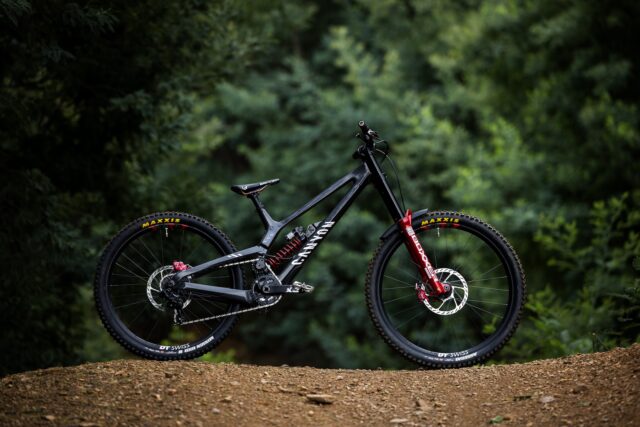
Intro
The Canyon Sender was first launched in 2016, but the Sender CFR (CFR stands for Canyon Factory Racing) pushed Canyon’s Downhill bike program into the limelight. We’ve seen a high pivot-equipped Sender under the Canyon Factory Racing team for a while now, with Troy Brosnan locking in a race win at Mont-Sainte Anne during last year’s UCI World Cup season.
We figured that the new high pivot design might make its way to the general public at some point, but it remained a mystery just how much Canyon had changed with respect to other aspects of the bike. Well, the second-generation Sender CFR is officially available, and it turns out Canyon found a lot of ways to refine the design.
We’re working on getting one in for a test during the summer bike park season, but in the meantime, check out the details of the new bike in our First Look.
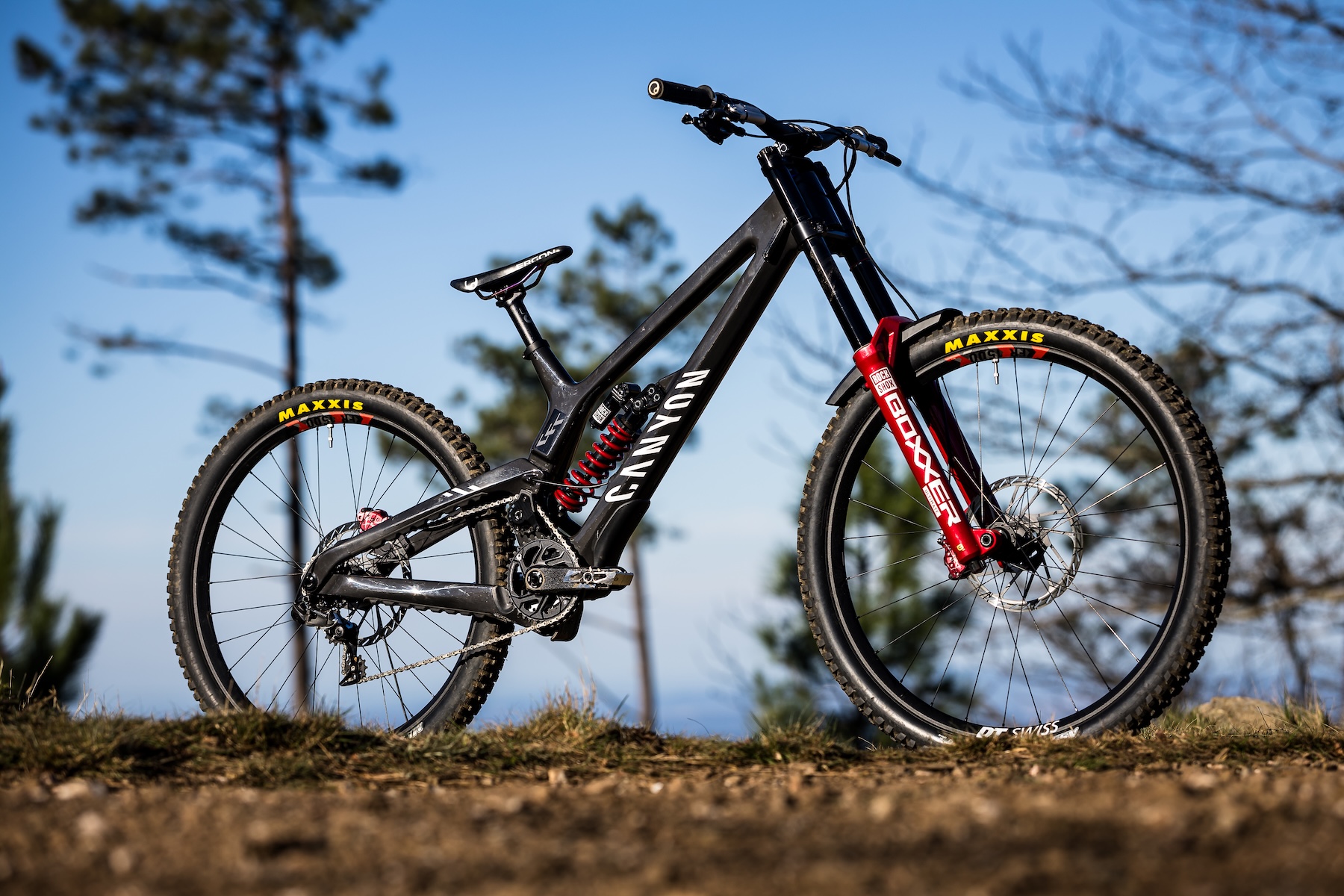
The Frame
The prior Sender CFR used a very similar suspension layout to the first 27.5’’-wheeled Sender released in 2016: a four-bar design with an extra linkage driving the shock through a tunnel in the frame. The layout kept the shock particularly low in the frame, helping to keep the weight centered around the bottom bracket. The Canyon CLLCTV race team wanted more, though, particularly in terms of suspension performance on rough tracks, poise under braking, and less pedal kickback. When your team is stacked with the likes of Troy Brosnan, Marine Cabirou, and Luca Shaw, and led by the legendary Fabien Barel, it’s hard not to take that feedback, and the Sender CFR’s new high pivot layout is the result.
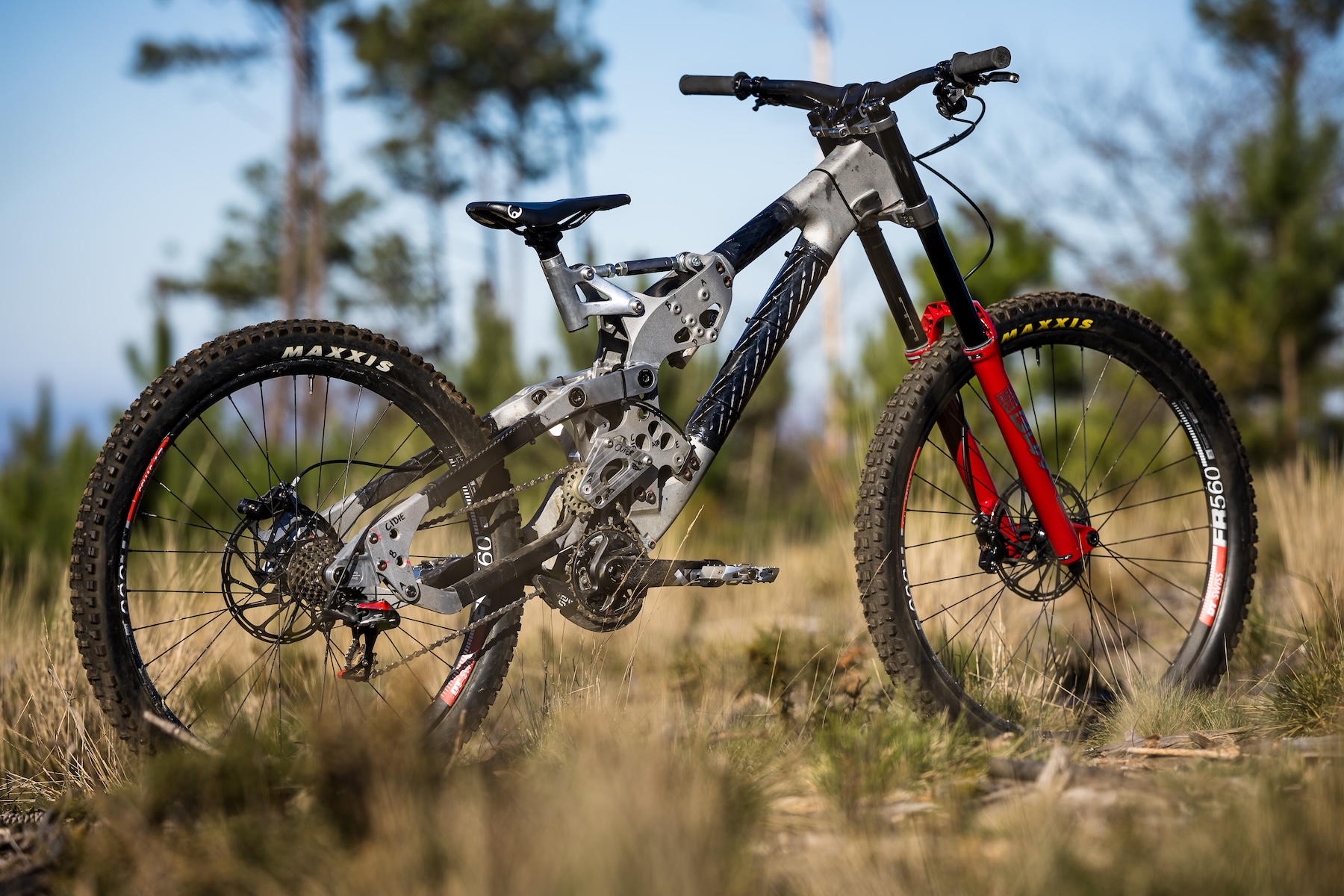
Canyon tried a bunch of different adjustment options and suspension layouts (including with a gearbox) with their Frankenstein SuperMule, ultimately landing on a high pivot design with a link rotating around the bottom bracket to drive the shock. Canyon doesn’t list the full kinematics for the Sender CFR, but we do know that it delivers 200 mm of rear wheel travel with the option to choose between 32.7% or 37% progression via a flip chip at the upper shock link. Canyon also says that the high pivot design allows for very low amounts of pedal kickback (Troy Brosnan rode an O-Chain on the old Sender CFR, but doesn’t on the new one). Anti-rise is cited as 130%, and while Canyon doesn’t specify at what point that is in the travel (we’d guess that’s at the sag point), that’s a fairly high anti-rise number and should mean that the bike stays rather hunkered down into its travel under braking forces.
The new suspension layout still keeps the shock quite low in the frame, which was a priority for the design team as part of maintaining a low center of gravity. All suspension axles are oversized and turn on double-sealed bearings for longevity, which hopefully bodes well for minimized maintenance over the course of a race season.
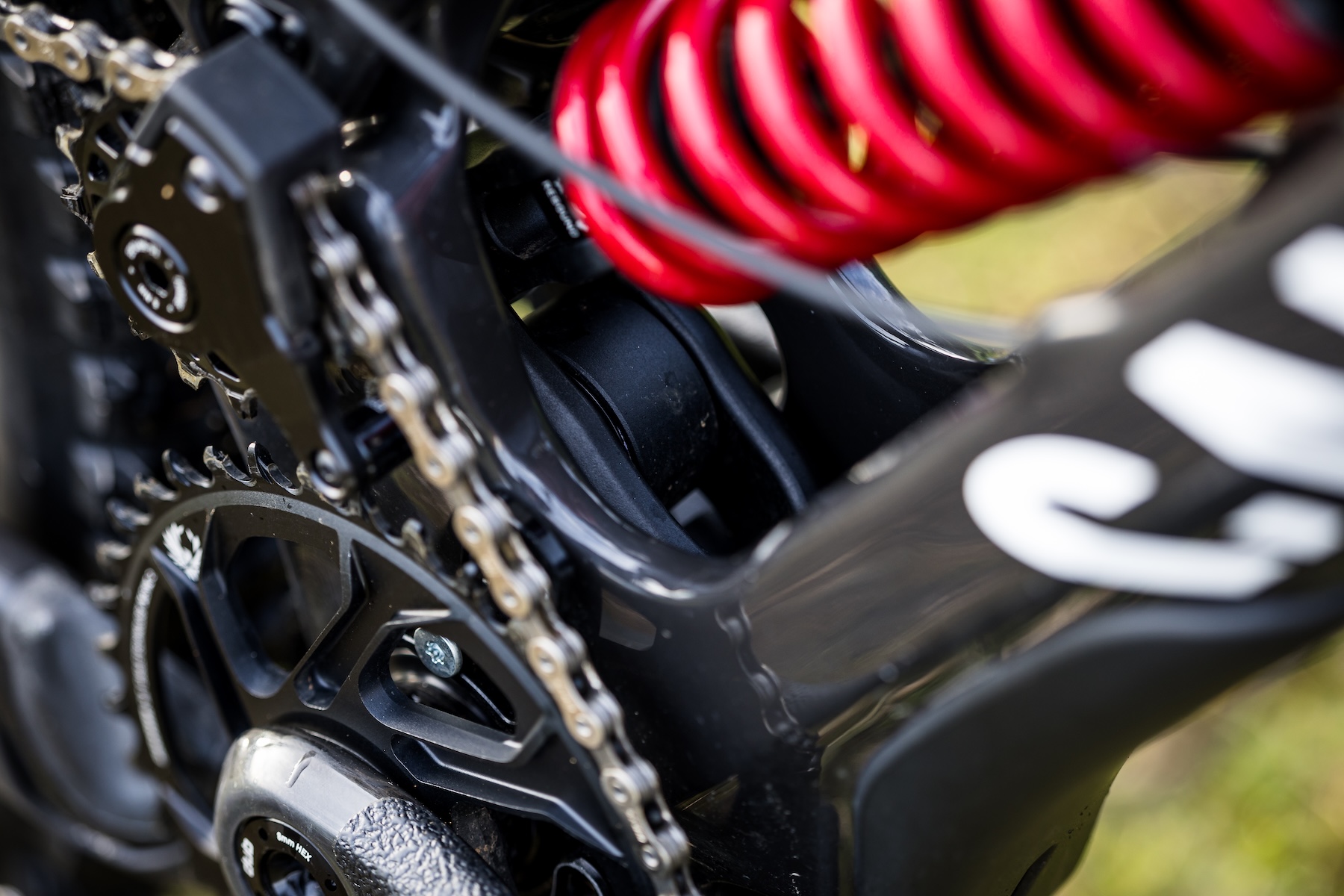
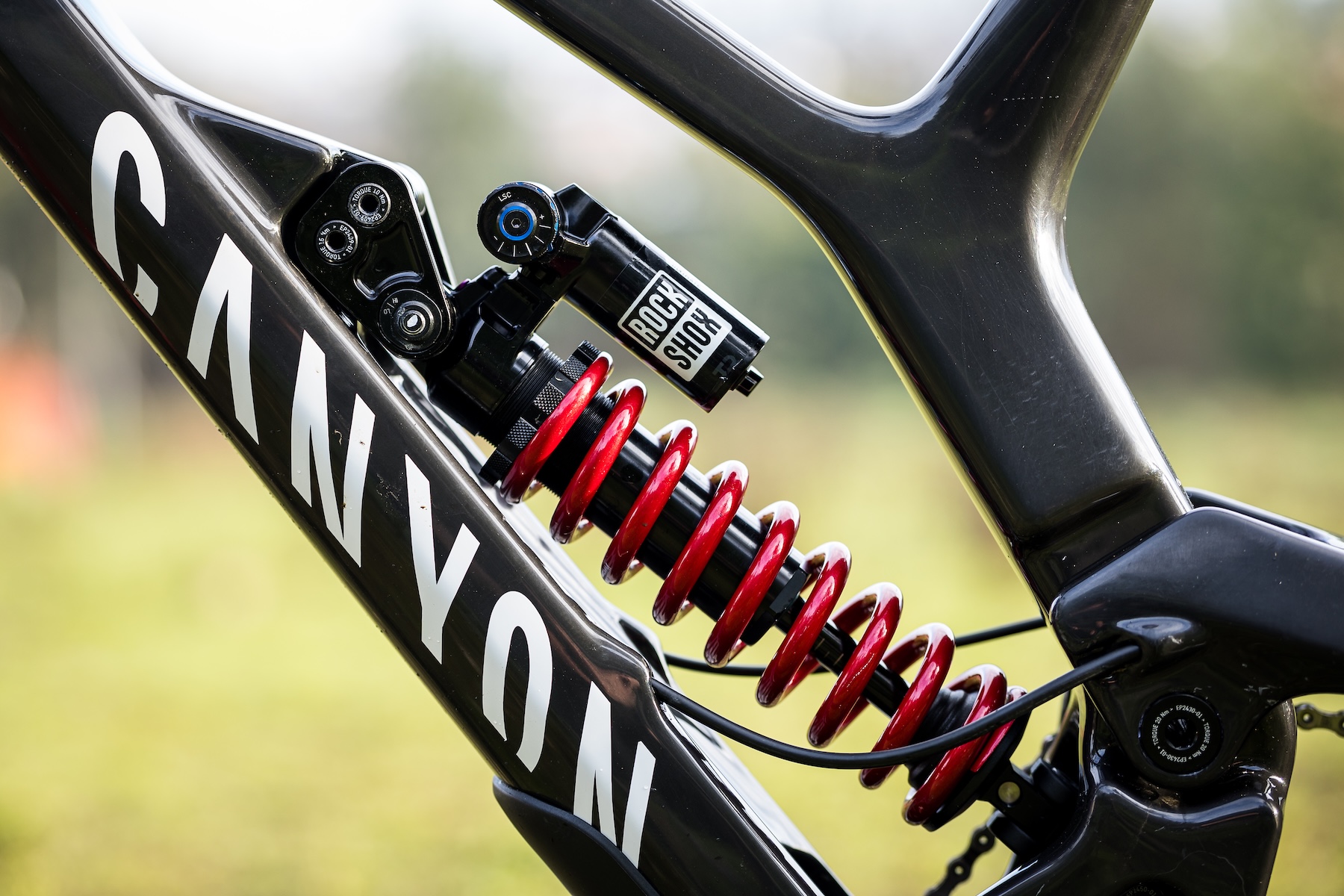
Another big change with the new Sender CFR is the move toward a dedicated mixed wheel platform. While the older Sender CFR could run 29’’ wheels or a mixed wheel setup, Canyon has moved in the direction of a smaller 27.5’’ rear wheel, citing increased responsiveness and maneuverability. That decision may ruffle some feathers for dedicated fans of 29’’ wheels front and rear, but it’s a growing trend in the world of Downhill that seems here to stay.
Canyon also took another look at their carbon fiber construction techniques, bringing in a new method they call High Impact Technology Carbon (or HIT Carbon). The approach draws inspiration from their Trials bike, the Stitched CFR Trial, and embeds polymer fibers into the layup of the downtube, where Canyon says it helps significantly with impact resistance.
Canyon’s K.I.S. (Keep It Stable) steering stabilizer system also comes fitted as standard, but is removable. For folks who aren’t familiar with K.I.S., it relies on two hidden springs running from the steerer to an anchor in the top tube. Those springs exert a self-centering force on the fork, supposedly helping to reduce deflection as the wheel glances off of obstacles. The tension is adjustable, and Canyon includes a blanking plug for the anchor in the top tube if the rider chooses to remove it for a more conventional setup.
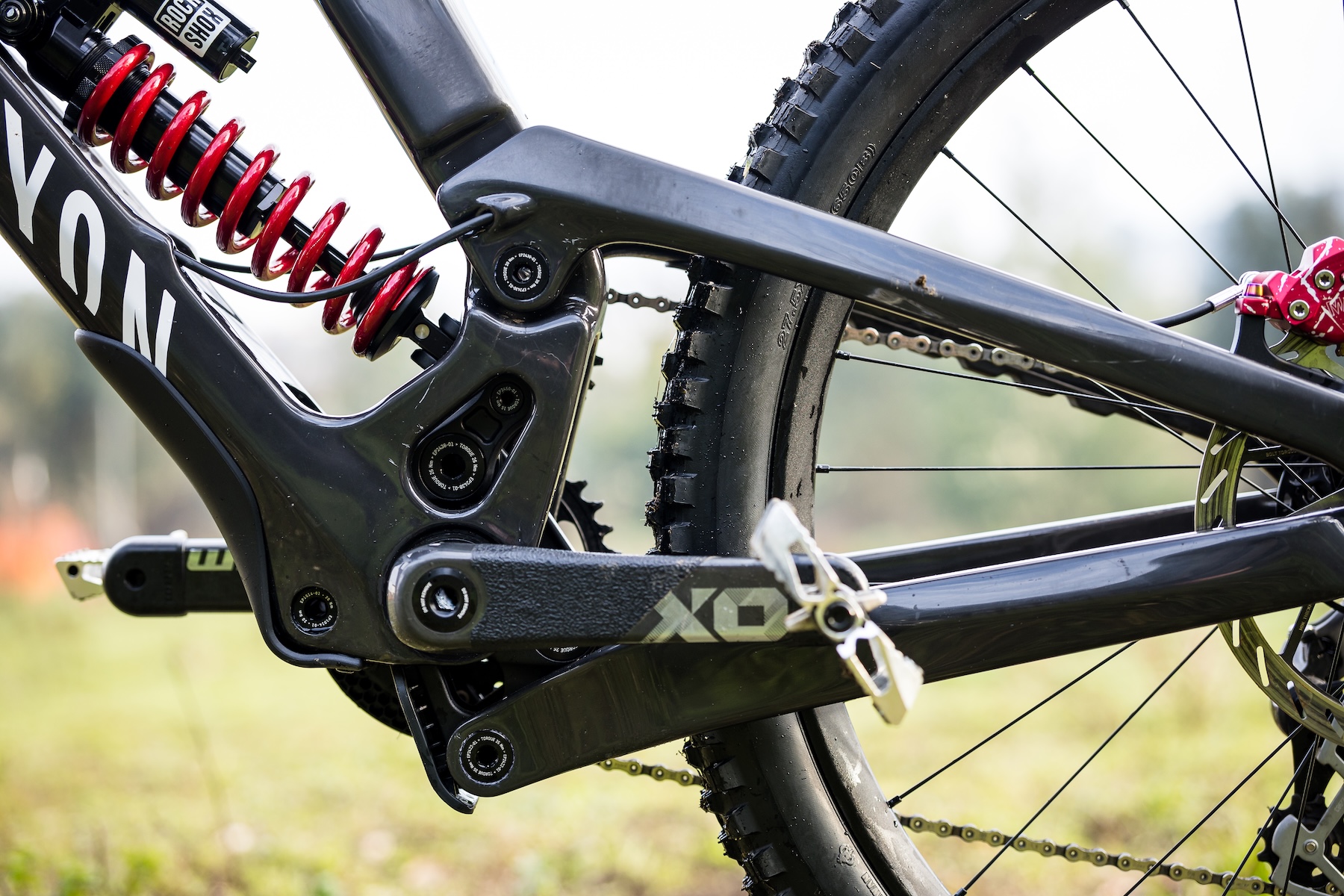
Fit & Geometry
One area where Canyon kept with the philosophy of the prior Sender CFR is in offering ample adjustment. While it does create a lot of extra parameters to play with, Canyon strongly asserts that a highly adjustable package allows riders to tune the Sender CFR to their exact needs to unlock extra speed.
Beyond the leverage rate adjustment we mentioned above, Canyon also includes a flip chip for adjusting the bottom bracket height by 5 mm, along with reach adjustment cups at the headset that allow for a neutral position, or +/- 8 mm to fine-tune body position. The bottom bracket adjustment has a small impact on head tube angle. Interestingly, the chainstay length is no longer adjustable like it was with the prior Sender CFR, with all sizes in the range sitting at 438 mm. That sounds short, but keep in mind that the high pivot design inherently means that the wheelbase grows through some portion of the travel (though we don’t know exactly how much).
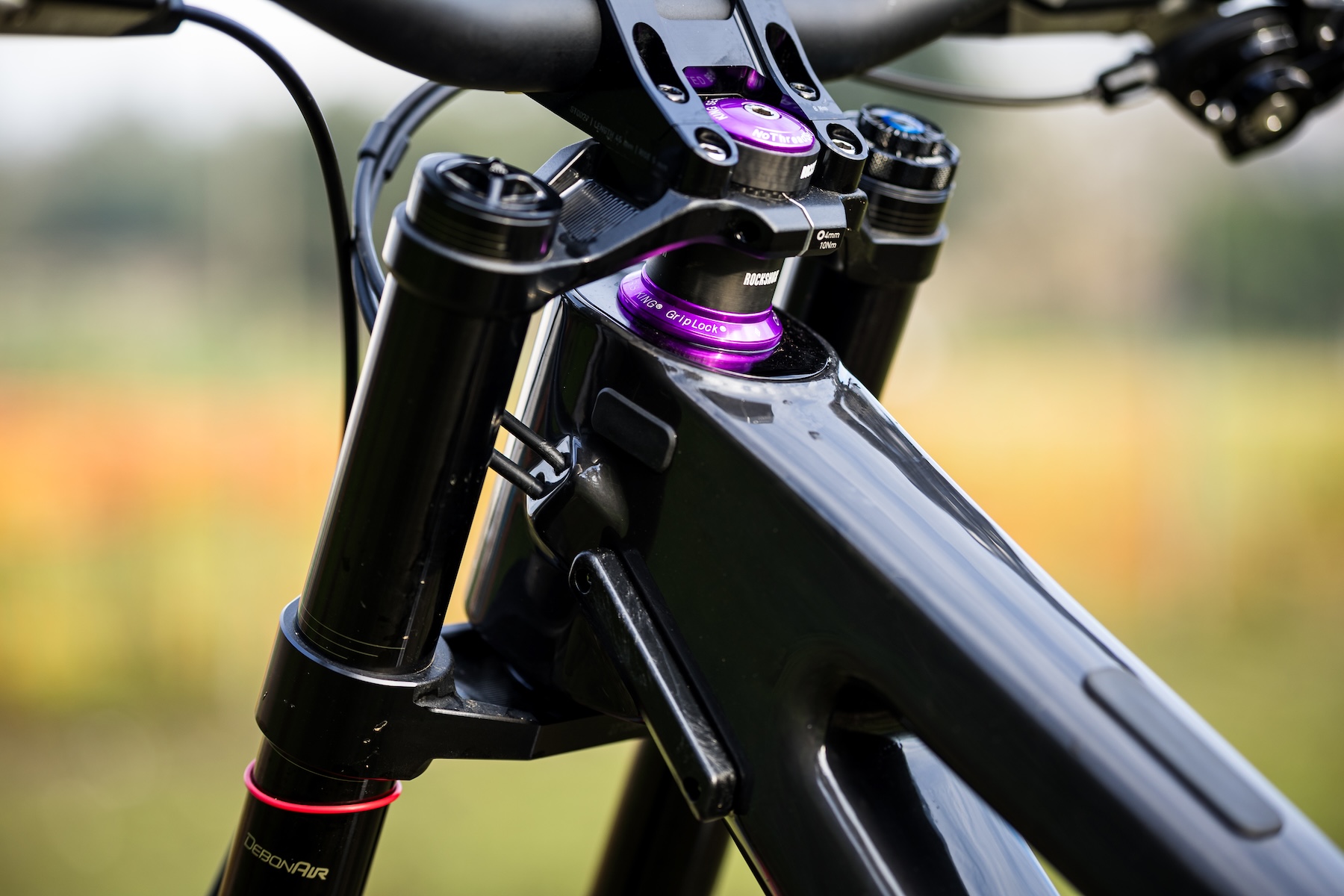
Otherwise, geometry isn’t wildly different from the old Sender CFR, though reaches have gotten slightly longer and stacks slightly taller. A size Large of the new Sender CFR gets a lengthy 495 mm reach in neutral position, a 63° head tube angle with the bottom bracket flip chip in High position, and a 635 mm stack height. All sizes err on the side of longer-than-average reaches at a given nominal size, but the adjustable headset gives a lot of flexibility to tune from the frame’s neutral baseline.
Geometry details for the new Sender CFR are below, with comparison to the old bike:
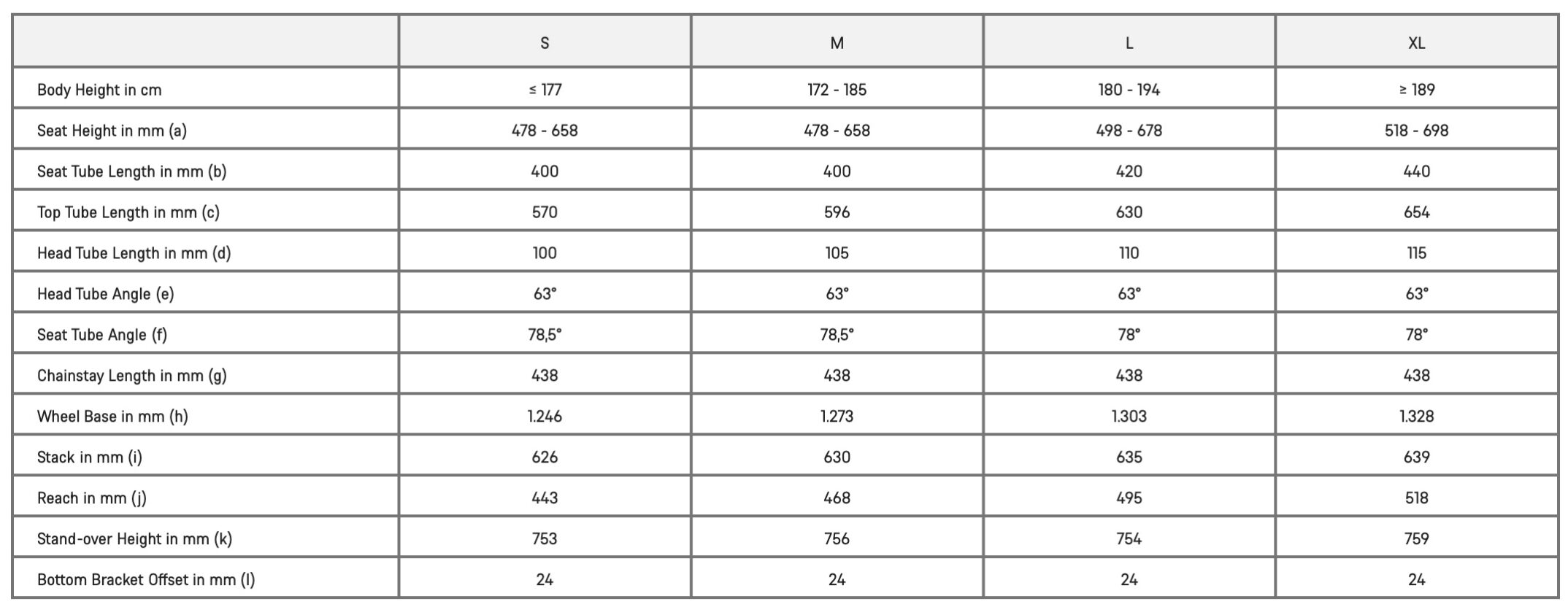
The Builds
While Canyon offers two builds overseas, the only option here in the US is the top-shelf Sender CFR Team. Canyon says it’s the same build that took Troy Brosnan to victory at the Mont-Sainte Anne World Cup last year, and while we’d suspect he may get some special treatment when it comes to suspension and some other details, it is indeed a very nice build.
SRAM is heavily featured in the build, starting with suspension. A RockShox Boxxer Ultimate is matched to a Vivid Coil Ultimate rear shock, while SRAM Maven Silver brakes should provide ample stopping power. SRAM’s XO1 DH drivetrain handles shifting duties. The DT Swiss FR1500 wheels are DT Swiss’ flagship aluminum Downhill wheels, and the Maxxis Assegai front tire and DHR II rear tire both come with a Downhill casing and MaxxGrip rubber. The bar, stem, and seatpost are Canyon’s in-house G5 models, and the saddle is Ergon’s SMD20 model. Total build weight is claimed as 40.79 lbs / 18.50 kg, which really isn’t all that lightweight, but there also aren’t any parts in that list that seem to prioritize weight over durability.
Build details are as follows:
Sender CFR Team ($7,799 USD):
- Drivetrain: SRAM XO1 DH
- Brakes: SRAM Maven Silver
- Fork: RockShox Boxxer Ultimate (200 mm)
- Shock: RockShox Vivid Coil Ultimate
- Wheels: DT Swiss FR1500
- Dropper post: N/A
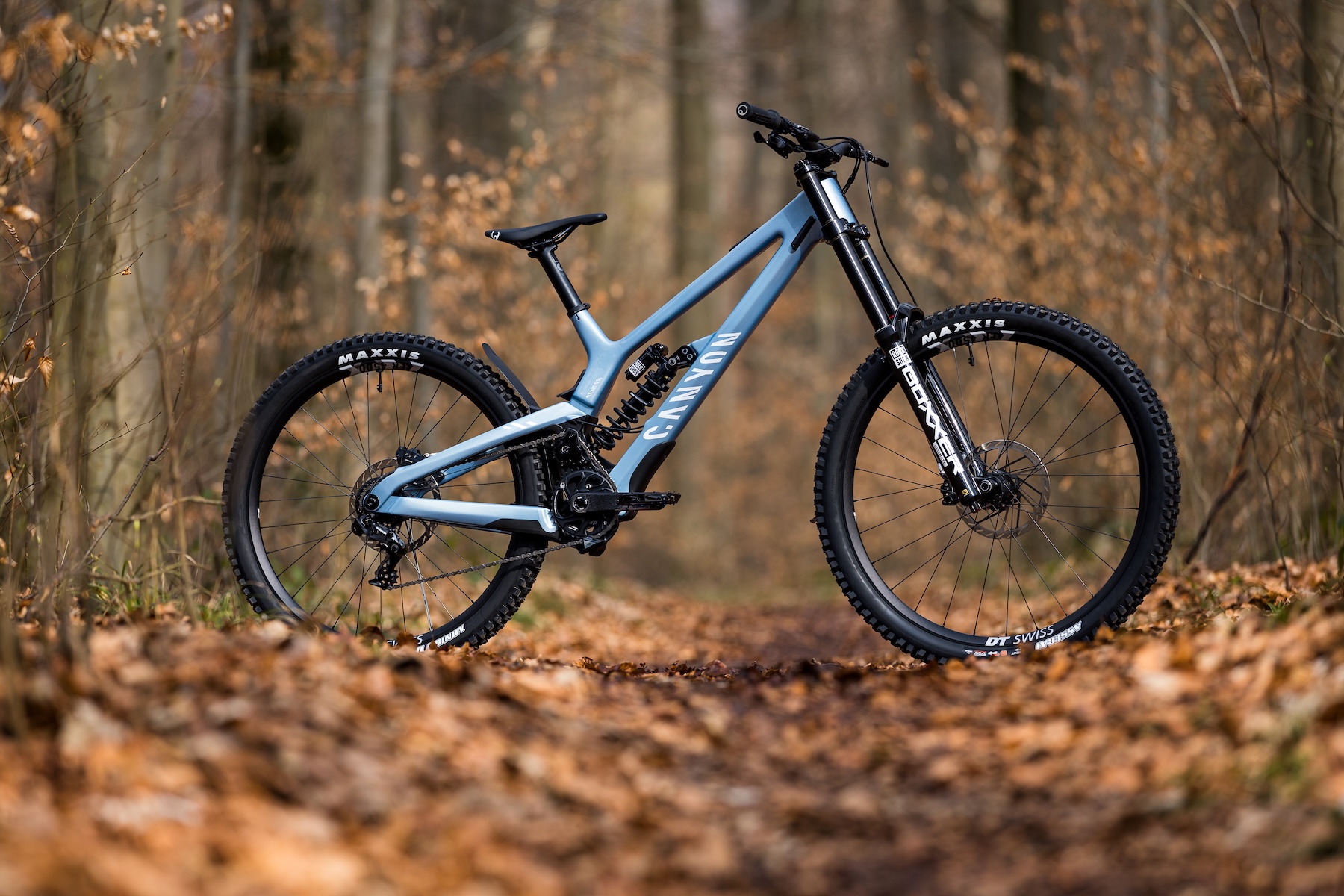
Some Questions / Things We’re Curious About
(1) I’ve briefly ridden the old Sender CFR, and it was very much on the more responsive side of the Downhill spectrum. It maintained speed very well, but didn’t mute impacts as much as some other bikes. Just how different does the new Sender CFR feel relative to the old one?
(2) The Sender CFR doesn’t have adjustable chainstays like the old one did, but there’s now a high and low bottom bracket setting as well as a leverage rate adjustment. How much of a difference do all of the new adjustments make, and how easy is it to get the Sender CFR set up?
Bottom Line (For Now)
Canyon hasn’t exactly been secretive about their new Sender CFR’s development process, and they must be feeling pretty good about its potential after already notching a win at Mont-Sainte Anne last year. It appears to be a race bike through-and-through, and we’re eager to see for ourselves just what it’s capable of on track later this season. We’ve got one on the way for review, so stay tuned to see how it shakes out.
